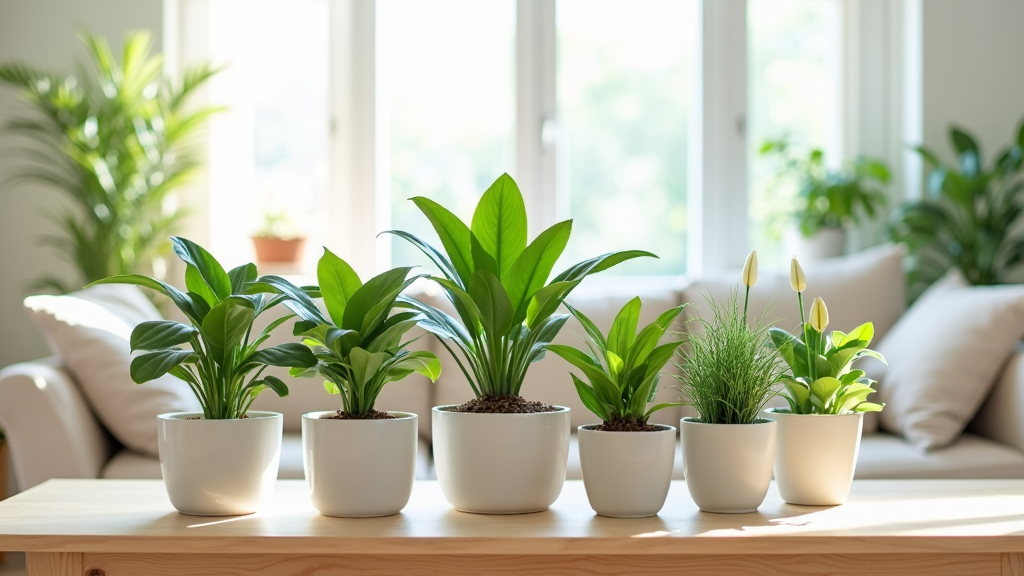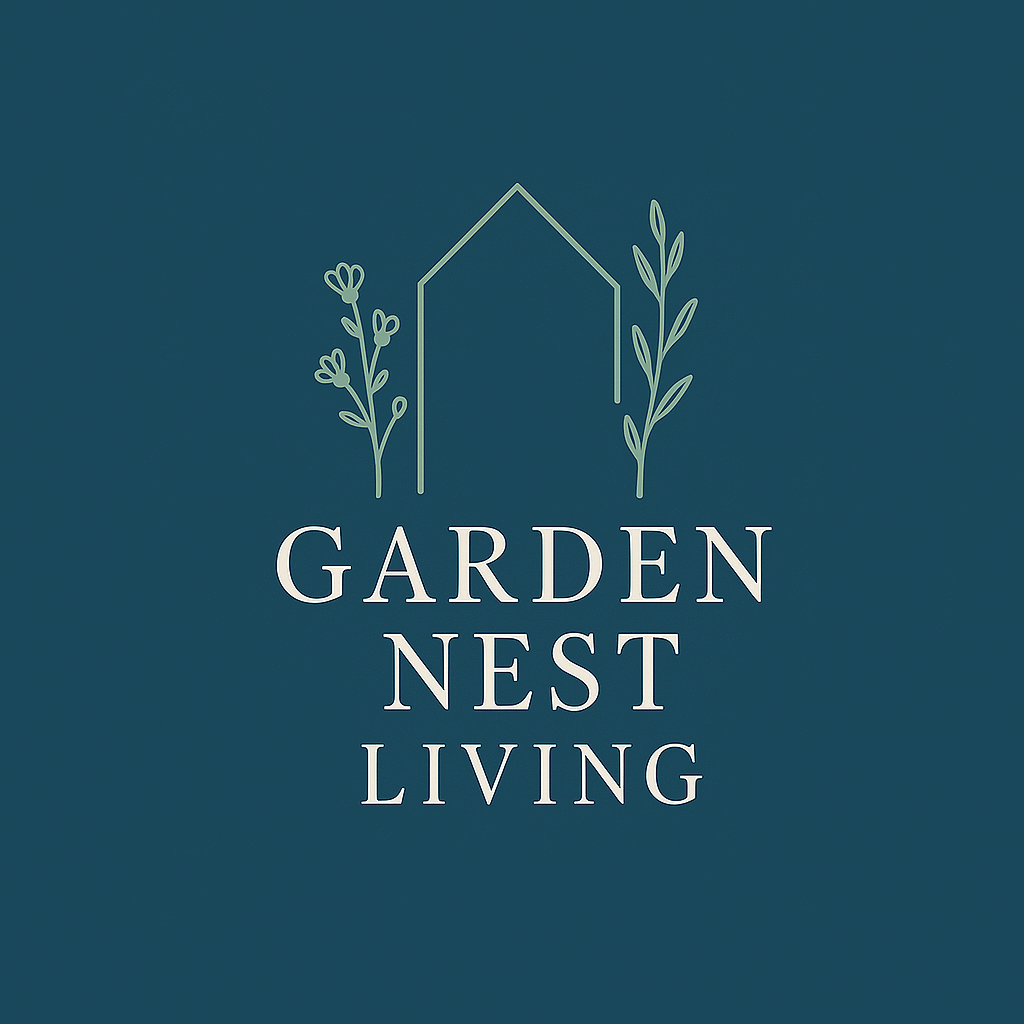Getting started with indoor plants is something I always recommend to friends who want to make their living space feel fresher and cozier. Houseplants aren’t just for those with a green thumb; plenty of varieties are super forgiving and thrive even when you’re new to plant care. If you want to liven up your space without tons of effort or stress, I’ve pulled together a list of easy to grow indoor plants that make a great starting point.

Why Choose Easy Indoor Plants for Beginners?
Easy care indoor plants do more than just look nice. They’re especially good for boosting your mood and helping to clean the air inside your home. For anyone worried about keeping plants alive, choosing varieties that handle low light, missed waterings, and basic rooms makes things much simpler. These plants fit well with busy routines and don’t demand a lot.
The indoor plant market has exploded lately, with plenty of people looking for that touch of green without the pressure. In fact, houseplant sales have gone up steadily for years, with more folks appreciating the mental health boost a few leaves can give. It’s not all about looks; lots of plants are known for making everyday spaces healthier and more relaxing to be in.
Learning a bit about what each plant needs means you’re less likely to run into surprise issues, so you’ll get the most out of your new leafy friends. If you’re looking for an easy and budget-friendly way to make your space pop, an indoor plant is a perfect start. Over time, you’ll get a feel for which plants match your lifestyle and how best to arrange them for maximum coziness and eye-catching appeal.
What Makes a Plant Beginner Friendly?
The best indoor plants for new growers are the ones that don’t mind occasional neglect. These plants generally share a few helpful traits:
- Can handle missed waterings: They won’t shrivel right away if you forget to water once or twice.
- Tolerate lower light: Perfect if your place doesn’t get bright sunlight all day.
- Low problems with pests: Some plants attract fewer bugs or diseases inside.
- Don’t outgrow their pots too quickly: Less frequent repotting means less hassle.
Getting familiar with these traits helps you pick plants that don’t just survive but actually thrive indoors without constant care. With time, you might even find you’ve got an entire collection that suits your routine and makes each room more inviting.
10 Easy to Grow Indoor Plants for Beginners
If you’re eager to give indoor gardening a try, these beginner friendly plants are a great way to get started. Here are my top picks and why I think each one is worth a spot in your home:
- Pothos (Epipremnum aureum): It’s often called “devil’s ivy” for good reason; it’s almost impossible to kill. It’s happy in low light and only needs watering when the soil feels dry. Plus, those big, variegated leaves look pretty cool trailing from a shelf or hanging basket.
- Snake Plant (Sansevieria): This plant is super forgiving; it’ll grow in bright or low light and isn’t too fussy about watering. It even helps clean the air. I love how upright and modern it looks in any corner.
- Spider Plant (Chlorophytum comosum): These are classic for a reason. They grow fast, send out little “babies,” and handle house conditions like champs. If you travel or forget water sometimes, no worries.
- ZZ Plant (Zamioculcas zamiifolia): ZZ plants barely need any attention. They’re fine with little water, low light, and uneven schedules. Their waxy leaves are always glossy and tough.
- Peace Lily (Spathiphyllum): You get elegant white blooms with hardly any effort. Peace lilies droop to tell you they’re thirsty and perk right up after watering. They can handle lower light too, making them flexible for home or office.
- Cast Iron Plant (Aspidistra elatior): True to its name, this guy puts up with lots of shade and irregular watering. Slow growing and resilient, it’s pretty much hands off once it’s settled in.
- Jade Plant (Crassula ovata): This succulent just wants bright light now and then. Its plump, shiny leaves store water, so missing a week or two isn’t a disaster.
- Philodendron: Trailing or upright, different philodendron types are famous for being super easy indoors. Just a little water and moderate light, done. Their lush leaves fill a space in no time.
- Aloe Vera: Beyond its soothing gel (handy for small burns), aloe loves a sunny spot and only needs a drink once the soil’s dried out fully. It’s fuss free if you’re careful not to overwater.
- Chinese Evergreen (Aglaonema): This plant lives happily in just about any light. Its patterned leaves add color, and it doesn’t need much water. Super popular for people who want dependable greenery.
If you want to get creative, mixing and matching these plants in clusters can make a real statement. Try combining plants like pothos and snake plant for different leaf shapes, or create a little green corner with aloe, jade, and spider plant together.
Quick Tips for Keeping Indoor Plants Alive
Even with easy indoor plants, a little routine helps them stay healthy. Here’s what works best when you’re just getting started:
- Don’t overwater: Water only when the top inch or so of soil feels dry. Most beginner plants do better with less water than too much.
- Check the light: Understand what type of light each plant likes, but most on this list do fine in medium to low light. Avoid sticking plants in direct, hot sun unless they’re okay with it (like aloe or jade).
- Feed every so often: A diluted houseplant fertilizer every couple of months helps, but don’t worry if you forget now and then.
- Dust those leaves: Wipe leaves gently with a soft cloth or paper towel. Dust can block sunlight and slow growth.
- Don’t stress about repotting right away: As long as roots aren’t crawling out of the pot, you’re good for a while.
Consistency is more helpful than perfection. These plants forgive a lot, so don’t sweat every little mistake. Creating a simple plant care calendar or reminders on your phone can be useful if you’re worried about forgetting certain tasks.
Things to Consider Before Buying Indoor Plants
Starting with houseplants is pretty low risk, but thinking ahead helps you avoid common headaches. Here are a few things I’ve found useful to keep in mind:
- Pet safety: Some common houseplants, like snake plants or philodendrons, can make pets sick if chewed. Always check before bringing a new plant home if you’ve got animals around.
- Space and placement: Some plants get huge. Snake plants and ZZ plants stay fairly contained, but things like philodendrons or spider plants can spread. If you want to keep things tidy, choose accordingly.
- Watering habits: If you’re forgetful or travel a lot, plants like pothos or jade are more forgiving. If you love tending plants daily, you might enjoy a peace lily instead.
- Humidity needs: Most easy houseplants are fine in regular indoor air, but if you live somewhere super dry, misting occasionally or using a pebble tray with water can help.
Doing some quick research about each plant’s preferences, especially if you have kids or pets, is really important for a stress free start. Sometimes it’s also helpful to chat with a nursery worker or ask online plant communities about any specific concerns you may have before purchase.
Pet Safety
Before adding any plant to your home, check online resources like the ASPCA’s Toxic and Non-Toxic Plants List. Some varieties, while great for homes, aren’t safe around curious dogs and cats. Pothos, snake plants, and peace lilies can all cause stomach issues if nibbled. If in doubt, opt for plants like spider plant or cast iron plant, which are generally safe for pets.
Watering Needs
Most listed plants like their soil to dry out between waterings. Plants like spider plant or pothos can bounce back quickly even if droopy. If you’re someone who tends to “love your plants to death,” try to resist the urge to water every day. It’s a good idea to use pots with drainage holes so excess water doesn’t get trapped and cause root rot.
Humidity and Light
Standard indoor humidity is perfect for most easy plants. Plants like aloe or jade prefer it drier. Avoid placing shadeloving plants in direct, hot sunlight near southfacing windows; that can scorch leaves pretty fast. Instead, display them near a north or east window, or even try them in the bathroom if it gets some light and stays a bit humid.
Troubleshooting Common Indoor Plant Problems
Even with the easiest plants, some hiccups pop up from time to time. Here’s how I handle a few frequent issues:
- Yellow leaves: This is often from overwatering or not enough light. Cut back on watering and make sure your plant has enough indirect sun.
- Crispy leaf tips: Usually from dry indoor air or buildup of fertilizer. Watering less often or wiping off excess fertilizer can help.
- Drooping plants: Don’t panic. Many plants just want a drink or to be moved to a brighter spot. If soil is wet but the plant’s drooping, check for roots sitting in water.
Watching your plant’s leaves and growth patterns helps you solve issues before they become big problems. If you’re ever unsure, it can be helpful to snap a photo and ask in a plant community forum for advice.
Frequently Asked Questions
Here are some common things people ask when they’re picking out or caring for beginner indoor plants:
Question: Which indoor plant needs the least care?
Answer: ZZ plant and snake plant are two of the toughest; you can basically forget about them for weeks, and they’ll be just fine.
Question: How do I know when to water my plant?
Answer: Push your finger into the top inch of soil. If it feels dry, go ahead and water. If not, wait another day or two.
Question: Will these plants grow in a room with no windows?
Answer: While some tolerate low light, all need at least some light during the day. If you’re dealing with a windowless space, a grow light can help keep your plant happy.
Getting the Most Out of Your Indoor Plant Adventure
Adding easy to grow plants to your living space is a great way to refresh your environment, especially if you’ve never tried it before. It’s really rewarding to see a droopy plant liven up or watch new leaves pop out. Even if you make a mistake or two, these beginner plants are pretty forgiving. Stick with it, learn by doing, and you’ll be surprised how quickly you can turn your home into a calming green space. Give yourself permission to try different arrangements until you spot what feels cozy and personal; indoor plants are meant to be enjoyed, not stressed over. Bottom line, there’s no faster or more affordable way to let a little natural magic into your daily life.
